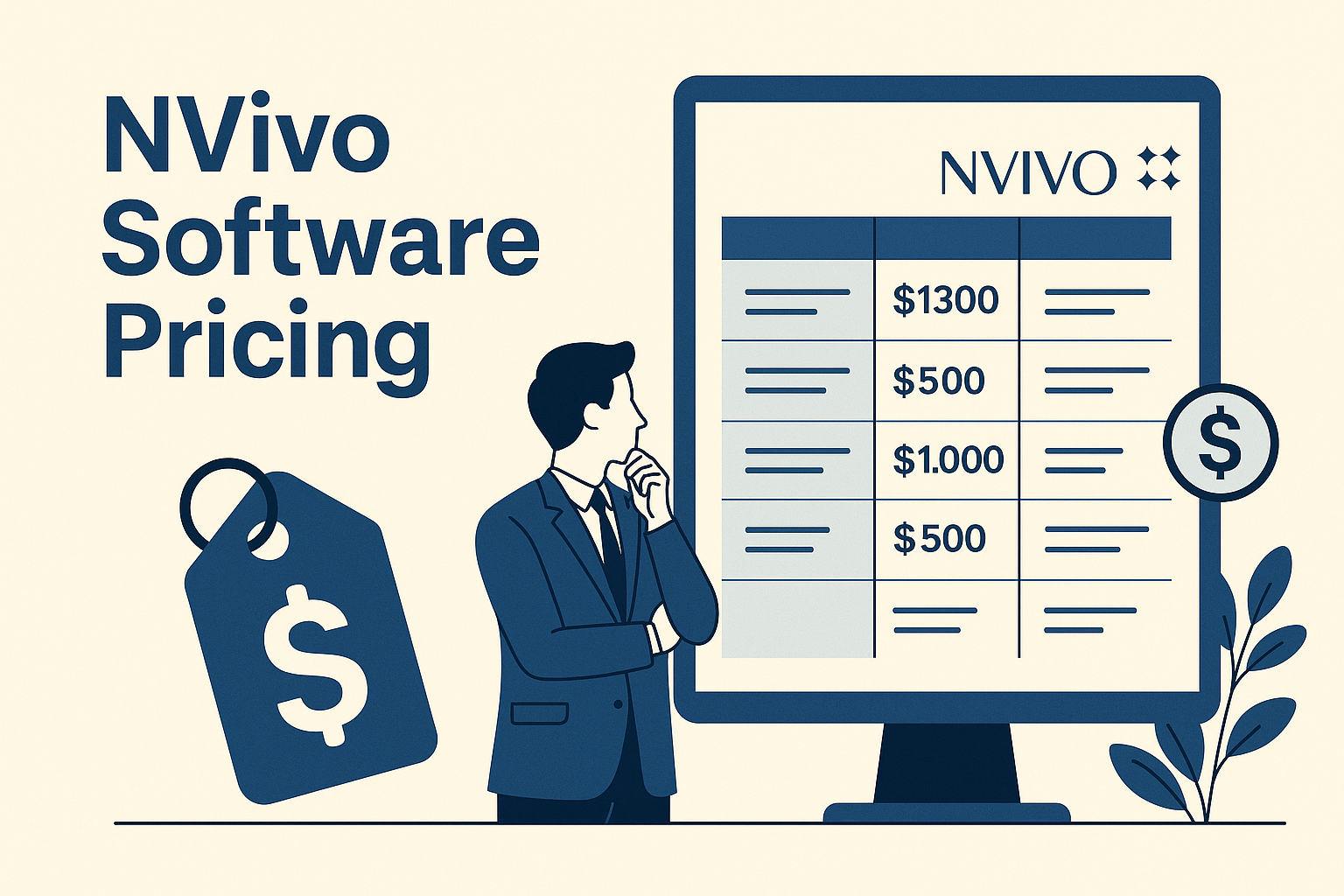When researchers first hear about NVivo, their initial reaction is often excitement at its advanced qualitative analysis features—then hesitation when they see the price tag. Whether you’re a grad student trying to budget for your dissertation, a research team at a nonprofit, or a large organization managing complex data projects, understanding NVivo’s pricing structure is key before you commit.
The truth? NVivo isn’t cheap. But knowing exactly how much you’ll pay—and whether it’s worth the investment compared to alternatives—can help you make a smarter decision. Let’s break it down.
NVivo Pricing Plans Overview
NVivo uses a tiered pricing model based on the type of user (academic vs. business/government), license type (individual vs. team), and whether you need cloud collaboration tools.
Here’s a simple breakdown of NVivo’s pricing tiers:
1. NVivo Individual License
- Academic: Around $114–$124 per month if billed annually, or ~$1,350 for a perpetual license.
- Business/Government: Higher pricing, typically $1,800+ for a perpetual license.
- Intended for: solo researchers, grad students, and faculty who don’t need team-based collaboration.
2. NVivo Teams
- Annual subscription: ~$2,500+ per year for small teams (varies depending on seats).
- Includes shared projects, centralized admin controls, and more flexible licensing.
- Intended for: research groups, labs, NGOs, or organizations with multiple researchers.
3. NVivo Collaboration Cloud
- Add-on service for real-time project sharing.
- Pricing: ~$290 per year (per user) in addition to your NVivo license.
- Intended for: teams working across locations who need to sync coding and analysis seamlessly.
Extra Costs to Consider
The sticker price is only part of the story. NVivo’s real cost comes from add-ons and long-term ownership:
- Training & Support – While NVivo includes basic help docs, many teams pay for workshops or third-party training (often $200–500 per person).
- Transcription Service – NVivo offers pay-as-you-go transcription at about $1.20/minute. For researchers with dozens of interviews, this adds up quickly.
- Upgrades – Perpetual licenses don’t always include future upgrades, meaning you may pay again for new versions.
Is NVivo Worth the Cost?
Here’s the honest truth: NVivo is powerful, but not always the best fit for every researcher.
Where NVivo shines:
- Handling large-scale, complex qualitative datasets (thousands of interviews, focus groups, and mixed-method studies).
- Advanced querying, text search, sentiment analysis, and integration with surveys.
- Academic contexts where NVivo is the standard tool and often required by supervisors.
Where it may feel overpriced:
- Teams who only need basic coding and theming, not advanced statistical analysis.
- The lack of real AI assistance—NVivo has only very rudimentary automation, meaning most of the heavy lifting still falls on researchers despite the high price.
- Cases where you’re paying for the brand name rather than features you’ll actually use.
NVivo vs. Alternatives: Cost Comparison
To put NVivo’s pricing into context, here’s how it stacks up against other popular qualitative analysis tools:
| Tool |
Pricing |
Best For |
| NVivo |
$1,350+ per license (academic) / $1,800+ (business) + add-ons |
Large, complex projects; academic standards |
| UserCall |
$89–$199 per month (flat rate) |
Full AI automation and deep controls for thematic analysis without manual coding |
| MAXQDA |
$1,295 academic / $1,665 business |
Mixed-methods and visual coding |
| Dovetail |
$30–$375 per month (subscription) |
UX research, fast cloud collaboration |
| ATLAS.ti |
$500+ one-time license (academic discounts available) |
Entry-level coding, basic features |
A Researcher’s Anecdote on NVivo Costs
When I was running a multi-year project with 120+ interview transcripts, NVivo was the only software that could keep everything organized and queryable. The cost—about $1,400 plus training—stung at first. But in hindsight, it paid for itself by saving hundreds of hours in manual coding.
On the flip side, when mentoring a grad student with just 10 interviews, I advised her against buying NVivo. She ended up using a mix of Google Docs and a lightweight thematic analysis tool for under $100, and it suited her perfectly.
The lesson? Don’t buy NVivo because it’s the “standard”—buy it if your data complexity justifies the cost.
Final Take: Should You Pay for NVivo?
- Yes, if you’re in academia, managing large-scale qualitative datasets, or need its advanced querying and reporting features.
- No, if you’re running small projects, on a tight budget, or open to newer AI-powered alternatives.
NVivo remains the gold standard in many research circles—but in 2025, with more affordable and innovative tools emerging, it’s no longer the only option.
Tip: Before paying full price, check if your university, nonprofit, or company already has a site license. Many institutions cover NVivo for free. Check out our full guide to qualitative software tools here
